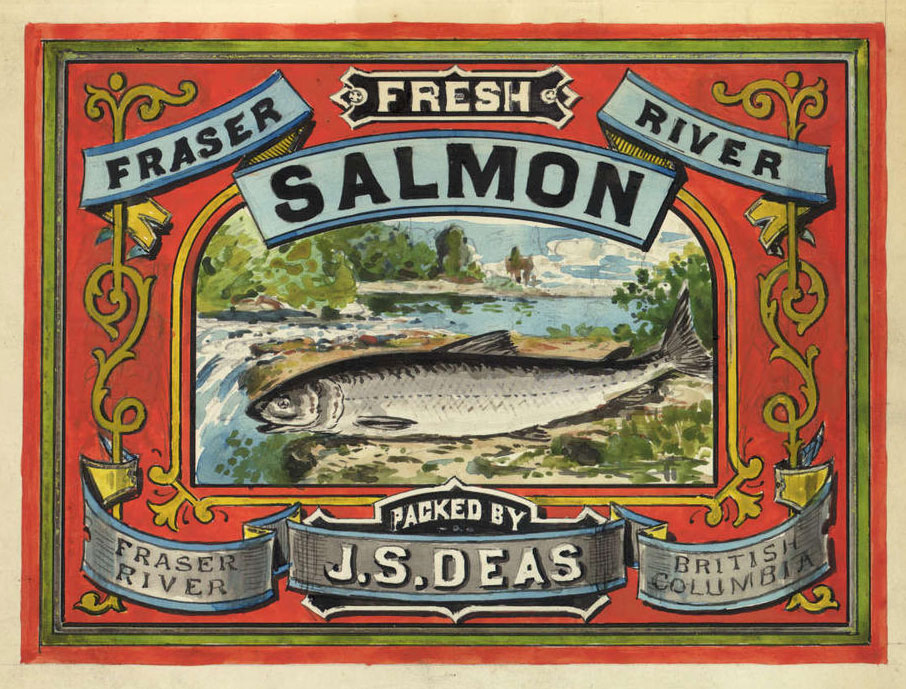
John Sullivan Deas
Born in South Carolina in 1838 as a free mulatto, Deas was a tinsmith there and then moved to San Francisco where he continued his trade. He was among the contingent of migrants that went to Victoria, Vancouver Island, upon Governor James Douglas’ invitation. He was married in 1862 to Fanny Harris, with whom he had at least eight children. At first, he was a manufacturing tinsman, then became a hardware dealer in 1866. Although he was able to purchase property, open businesses and exercise his rights as a British subject, he and his family still faced discrimination; it wasn’t exactly overt, but a kind of social exclusion and ridicule that was enough for him and his family to move to Vancouver.
In Vancouver, he made canning tins for Captain Edward Stamp. When Stamp passed, he started canning salmon on his own, leasing a saltery built for Captain James Cooper. In 1871, he pre-empted, or claimed land on the site that is now known as Deas Island and built his cannery, with New Brunswick Scotsman Alexander Loggie. The can labels were designed by Grafton Tyler Brown, the first black artist working in the Pacific Northwest. Deas was an industry leader and the only person of African descent working in the BC canning industry. The Deas Island Cannery was, at one time, the largest canned salmon producer on the Fraser river. When he tried to secure exclusive netting rights around his plant, Deas applied to both the federal and provincial government, but he was denied. He had some great runs, with numbers ranging between 200,000 and 400,000 cans per year.
In the end, Deas sold the cannery in 1878 to BC Canning Co, which operated until its closure in 1909. After the sale, Deas and his wife moved to Portland, Oregon in 1877, where they bought a rooming house. He passed away in Portland in 1880. As H. Keith Ralston put it, in John Sullivan Deas: A Black Entrepreneur in British Columbia Salmon Canning, “seven seasons in salmon canning during the first decade of continuous operation on the Fraser River entitles John Sullivan Deas to a prominent place among the founders of the canning industry in British Columbia.”
In Vancouver, he made canning tins for Captain Edward Stamp. When Stamp passed, he started canning salmon on his own, leasing a saltery built for Captain James Cooper. In 1871, he pre-empted, or claimed land on the site that is now known as Deas Island and built his cannery, with New Brunswick Scotsman Alexander Loggie. The can labels were designed by Grafton Tyler Brown, the first black artist working in the Pacific Northwest. Deas was an industry leader and the only person of African descent working in the BC canning industry. The Deas Island Cannery was, at one time, the largest canned salmon producer on the Fraser river. When he tried to secure exclusive netting rights around his plant, Deas applied to both the federal and provincial government, but he was denied. He had some great runs, with numbers ranging between 200,000 and 400,000 cans per year.
In the end, Deas sold the cannery in 1878 to BC Canning Co, which operated until its closure in 1909. After the sale, Deas and his wife moved to Portland, Oregon in 1877, where they bought a rooming house. He passed away in Portland in 1880. As H. Keith Ralston put it, in John Sullivan Deas: A Black Entrepreneur in British Columbia Salmon Canning, “seven seasons in salmon canning during the first decade of continuous operation on the Fraser River entitles John Sullivan Deas to a prominent place among the founders of the canning industry in British Columbia.”

